
Joseph Beuys - Biography and "shamanic," mystical works of a great master
Joseph Beuys (May 12, 1921 – January 23, 1986) was a representative of a constellation of the most iconic artists of the 20th century and a pioneer of postmodernism. Joseph Beuys was a participant in the art movement Fluxus and a master of provocation. The master's biography is filled with unconventional events. The artist's body of work encompasses a vast array of creations, including paintings, photographs, graphic works, installations, and performances. Art historian Arseny Steiner wrote that Beuys was an amateur painter who managed to grow from a humble portrait painter of nurses on the front lines into a sacred shaman of the Lower World, a subject of a country that does not exist on any map.
Joseph Beuys is now part of the world's cultural heritage. The master believed that every person has an artist within them. He claimed that there are no boundaries between art and life, and he proved it through his entire body of work. He held conversations about paintings with a dead hare, wrestled with a wild coyote and tamed it, planned to plant thousands of oak trees along the roads, created sculptures from fat and felt, and did many other strange and fascinating things.
 Joseph Beuys. Neo-Dadaism, 1952
Joseph Beuys. Neo-Dadaism, 1952
Biography of Joseph Beuys
Joseph Beuys was born on May 12, 1921, into the family of a German merchant named Joseph Jacob Beuys. He was born in Krefeld, but the family moved to the industrial town of Kleve, near the border of the Netherlands, when he was still an infant. It was in Kleve where his childhood took place.
 Joseph Beuys. Installation Deer Monument, 1958-1985
Joseph Beuys. Installation Deer Monument, 1958-1985
Even during his school years (Joseph attended a Catholic school and later a gymnasium), his teachers recognized his extraordinary talent for drawing. Fortunately, his artistic inclination was fully encouraged, and in addition to painting, he learned to play musical instruments, studied sculpture, and read extensively.
 Joseph Beuys. Flower Nymph, 1956
Joseph Beuys. Flower Nymph, 1956
As a teenager, Beuys developed an interest in medicine and zoology and even took care of circus animals. It is said that during the period of book burnings, Joseph saved a scientific treatise by the Swedish physician and botanist Carl Linnaeus from the flames. The boy was also not immune to the political realities of the time. In 1936, he became a member of the Hitler Youth, possibly because membership in this organization was mandatory.
In the spring of 1941, Joseph Beuys graduated from school. The fog of war already loomed over the world, and it affected everyone. In the year of his graduation, the future artist voluntarily joined the Luftwaffe and went to the front.
 Joseph Beuys. For the Siberian Symphony, 1966
Joseph Beuys. For the Siberian Symphony, 1966
It was his military career that gave rise to the myth that Beuys created around himself. In the winter of 1943, his plane was shot down in the Crimea region. Local Tatar residents supposedly rescued and nursed the artist back to health using fat and felt. This fact deeply influenced the artist and became a significant axis for his future works. However, there are doubts about the veracity of this story. The only confirmed aspect is the death of the pilot at the controls of the bomber, where the artist was located. There is no evidence that Tatars lived at the crash site. Moreover, the idea of healing facial fractures and burns with fat and felt seems unlikely.
 Joseph Beuys. Installation Quiltsuit, 1970
Joseph Beuys. Installation Quiltsuit, 1970
After the war, Beuys was captured and sent to a British prisoner-of-war camp, from which he returned home to Kleve a few months later. After recovering from his injuries, the artist decided to devote himself to art and continued his education. For several years, Joseph studied under the renowned modernist sculptor Ewald Mataré in Düsseldorf, whose work was declared "degenerate" by the Nazis.
In 1961, Beuys became a professor at the Düsseldorf Academy, but after eleven years, he was dismissed. This sparked a tsunami of protest among students and critics. In 1978, the dismissal was deemed unlawful, but by that time, Beuys' career as a teacher had already diminished.
Throughout this time, the artist continued to create his masterpieces. The different stages of his artistic development are clearly visible. In the 1940s and 1950s, his work reflected a pure shamanistic style, with paintings reminiscent of cave art and sculptures infused with the spirit of expressionism.
 Joseph Beuys. Installation Fat Chair, 1964
Joseph Beuys. Installation Fat Chair, 1964
In the 1960s, Beuys became one of the pioneers of the renowned Fluxus movement, alongside the founder of video art Nam June Paik and Yoko Ono. It was during this period that the artist established his signature image: the "eternal" felt hat (rumored to hide scars from injuries), a fishing vest, and a coat.
In November 1965, a solo exhibition of the genius opened in a private gallery. It was also during this time that Beuys presented his most iconic performance piece, " How to Explain Pictures to a Dead Hare".
Only in the 1970s did Beuys' art receive international recognition. However, it is worth noting that his only major solo exhibition during his lifetime was held in 1979 at the Guggenheim Museum in the United States.
 Joseph Beuys. Installation Table and Battery, 1958-1985
Joseph Beuys. Installation Table and Battery, 1958-1985
Throughout his life, the German master engaged in dozens of actions, held nearly a hundred solo exhibitions, created thousands of graphic works, and hundreds of installations. He gave lectures, organized events, participated in discussions, and symposiums.
Joseph Beuys passed away on January 23, 1986, in Düsseldorf, Germany. The cause of death for the exceptional artist was heart-related issues.
The Most Famous Paintings of Joseph Beuys
Today, dozens and hundreds of museums representing contemporary art strive to acquire masterpieces by the artist for their collections. Typically, his works are displayed in prominent places and become honorary exhibits. Among Joseph Beuys' most renowned works and paintings are:
- "Actresses" (1958) - figures of nude women are depicted on paper using pencils and paints.
- Performance "Siberian Symphony 1" (1963) - the first appearance of the "dead hare." The master played a piano covered in trash, which was placed against a school blackboard with a stuffed animal. Felt triangles with inscriptions in German were attached to the blackboard.
- Performance "How to Explain Pictures to a Dead Hare" (1964) - during the presentation, the artist covered his face with foil using honey. He moved around the room with the hare carcass, stopping at his works and explaining their meaning to the animal. The essence of the performance was to show the futility of approaching art from intellectual positions.
- Installation "Flock" (1969) - the composition consists of a car in front of which there are 24 pairs of sleds loaded with fat, felt, and a lantern (survival kit). The installation symbolizes the fact that in extreme conditions, the benefits of civilization will be of no use. Much more primitive things will become salvation.
- Performance with a coyote "I like America and America likes Me" (1974) - Beuys arrived in the USA and spent several days in a confined space with a wild animal, where they cautiously observed each other. After three days, the artist embraced the coyote and then left the country without ever setting foot on its soil.
 Joseph Beuys. Installation Siberian Symphony 1, 1963
Joseph Beuys. Installation Siberian Symphony 1, 1963
 Joseph Beuys. Performance How to Explain Pictures to a Dead Hare, 1964
Joseph Beuys. Performance How to Explain Pictures to a Dead Hare, 1964
 Joseph Beuys. Installation The flock, 1969
Joseph Beuys. Installation The flock, 1969
 Joseph Beuys. Performance I like America and America likes Me, 1974
Joseph Beuys. Performance I like America and America likes Me, 1974
Disillusioned with fascist ideals, the artist set himself the goal of healing a society that had burned its culture in the crematoriums of Auschwitz. Interestingly, after the war, he was the author of one of the monument projects in Auschwitz-Birkenau. Beuys' sketch did not become a finalist - the jury selected a work by Pietro Cascella.
Joseph Beuys was a creator for whom the preservation of life and warmth became the main theme. The idea that emerged after the crash over Crimea determined the artist's favorite material, which was felt. He created sculptures from it, wrapped various pieces of furniture with it, made clothing, and even covered himself while smearing with fat.


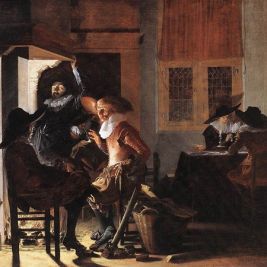 Golden Age of Dutch painting - an era that gave the world the finest masterpieces of Dutch art of all times
Golden Age of Dutch painting - an era that gave the world the finest masterpieces of Dutch art of all times  Still life is a genre of painting that perfectly reflects the artist's inner universe
Still life is a genre of painting that perfectly reflects the artist's inner universe 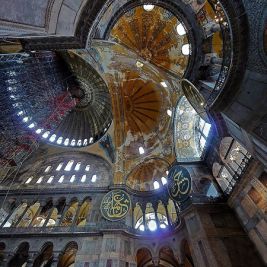 Byzantine art is a vast realm of unique artistic heritage of humanity
Byzantine art is a vast realm of unique artistic heritage of humanity  Surrealism and Abstract Gradients: Design Trends Shaping 2024
Surrealism and Abstract Gradients: Design Trends Shaping 2024  The painting "Bay of Naples" by Ivan Konstantinovich Aivazovsky is an invitation to immerse yourself in the serene beauty of a southern evening
The painting "Bay of Naples" by Ivan Konstantinovich Aivazovsky is an invitation to immerse yourself in the serene beauty of a southern evening  The National Order of the Legion of Honour
The National Order of the Legion of Honour 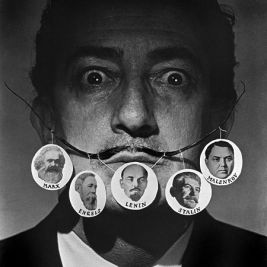 Salvador Dali - a brilliant surrealist artist
Salvador Dali - a brilliant surrealist artist 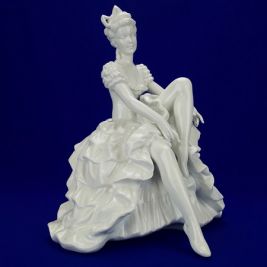 Wallendorfer Porcelain Manufactory - a manufacturer with a 250-year history
Wallendorfer Porcelain Manufactory - a manufacturer with a 250-year history 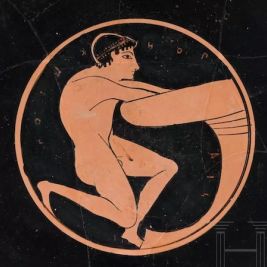 Hermann Historica Auction: Kunst, Antiquitäten & Antiken
Hermann Historica Auction: Kunst, Antiquitäten & Antiken 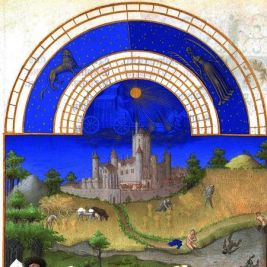 Gothic - the mystical art of the Middle Ages
Gothic - the mystical art of the Middle Ages